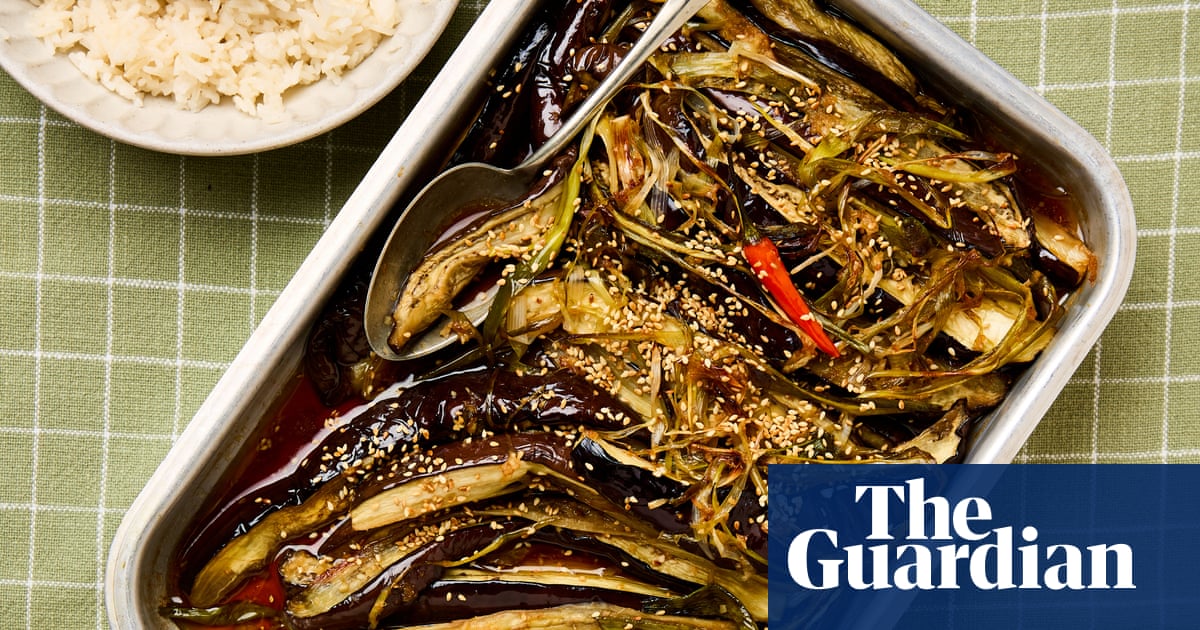Here are two things about aubergines that you may not know: first, they are giant berries (!) and, second, they’re roughly 92% water. The latter is important, because to get this mighty berry to reach its delicious potential, we need to dehydrate it (that is, remove as much water as possible and then hit it with lots of flavour). You could fry it, but, when the weather is lovely, I prefer hands-free cooking, which means roasting it. In this recipe, after roasting, I’ve used one of my favourite braising liquids – a mix of soy sauce, sake and sesame – to bring the aubergine back to life.
Cooking sake can be bought in larger supermarkets and Chinese grocery stores (if you can’t find it, use a nice drinking sake that will go nicely with the meal instead). Cook the rice before starting on the aubergines and cover it with a lid – it will stay warm for an hour.
Prep10 minCook35 minServes43 large or 4 medium aubergines(1.1kg)4 tbsp sunflower oil, or rapeseed oil5 tbsp light soy sauce¼ tsp fine sea salt6 tbsp cooking sake2 tsp light brown sugar2 tsp seasoned rice vinegar5 tbsp toasted sesame oil3cm x 3cm piece fresh ginger, peeled and finely grated4 garlic cloves, peeled and minced1 red bird’s eye chilli, slit lengthways100g spring onions, halved across the belly, then cut lengthways into long, thin strips (and rinsed, if need be)Toasted sesame seeds, to finishCooked plain rice, to serve
Heat the oven to 220C (200C fan)/425F/gas 7, and line two large trays with baking paper. Trim the tops off the aubergines, then cut each one into eight long wedges. Put these in a bowl with the sunflower oil, toss with your hands to coat, then lay the wedges side by side on the oven trays. Bake for 25 minutes, until soft.
Meanwhile, make the braising liquid. In a small bowl, combine the soy sauce, a quarter-teaspoon of salt, the sake, brown sugar, rice vinegar and three tablespoons of toasted sesame oil.
Put the remaining two tablespoons of sesame oil in a small frying pan on a medium to low heat and, once hot, add the ginger, garlic and chilli, and fry for two minutes, until pale golden. Add the spring onions, stir for a minute, then add the soy and sake mixture, take off the heat and mix well.
When the aubergines have had their 25 minutes, transfer them to a smaller, lipped baking tray, laying the wedges on top of each other. Stir the braising liquid again, then pour it all over the aubergines and shake the tin to make sure all the aubergines are covered. Roast for a further 10 minutes, sprinkle with sesame seeds and serve with rice alongside.
